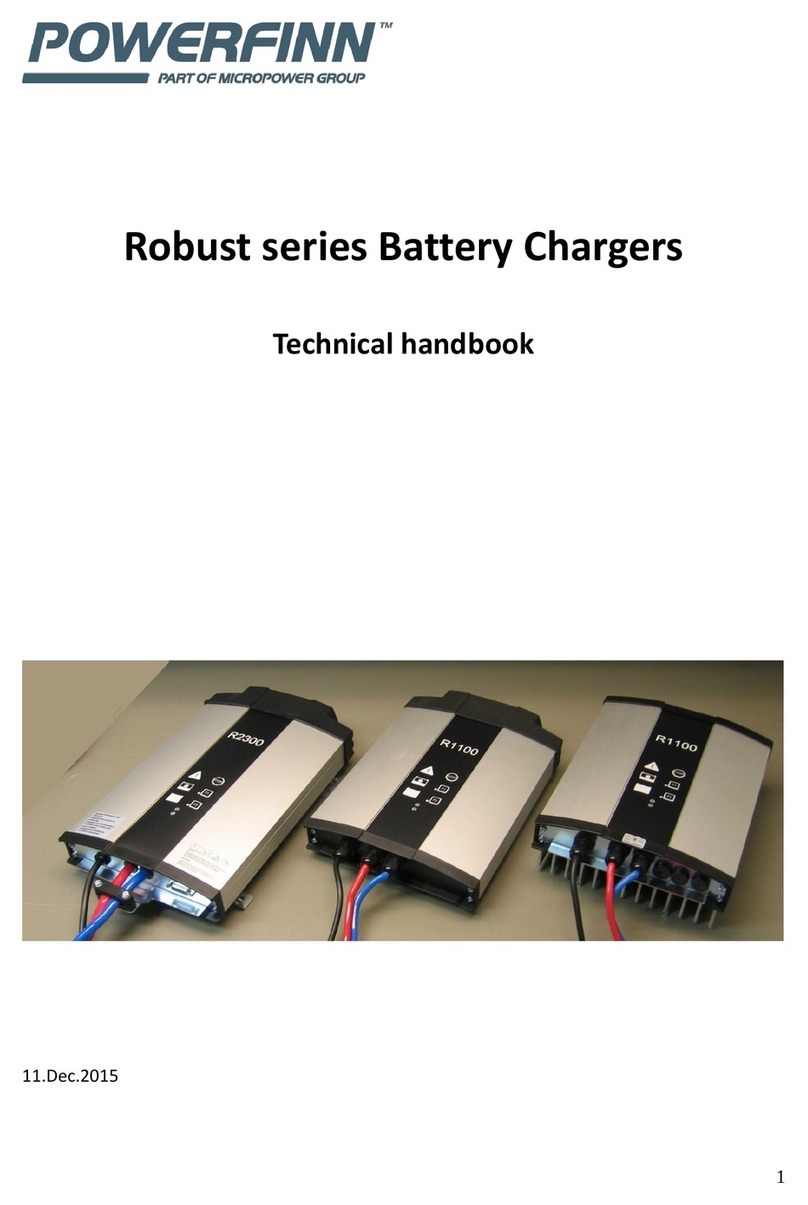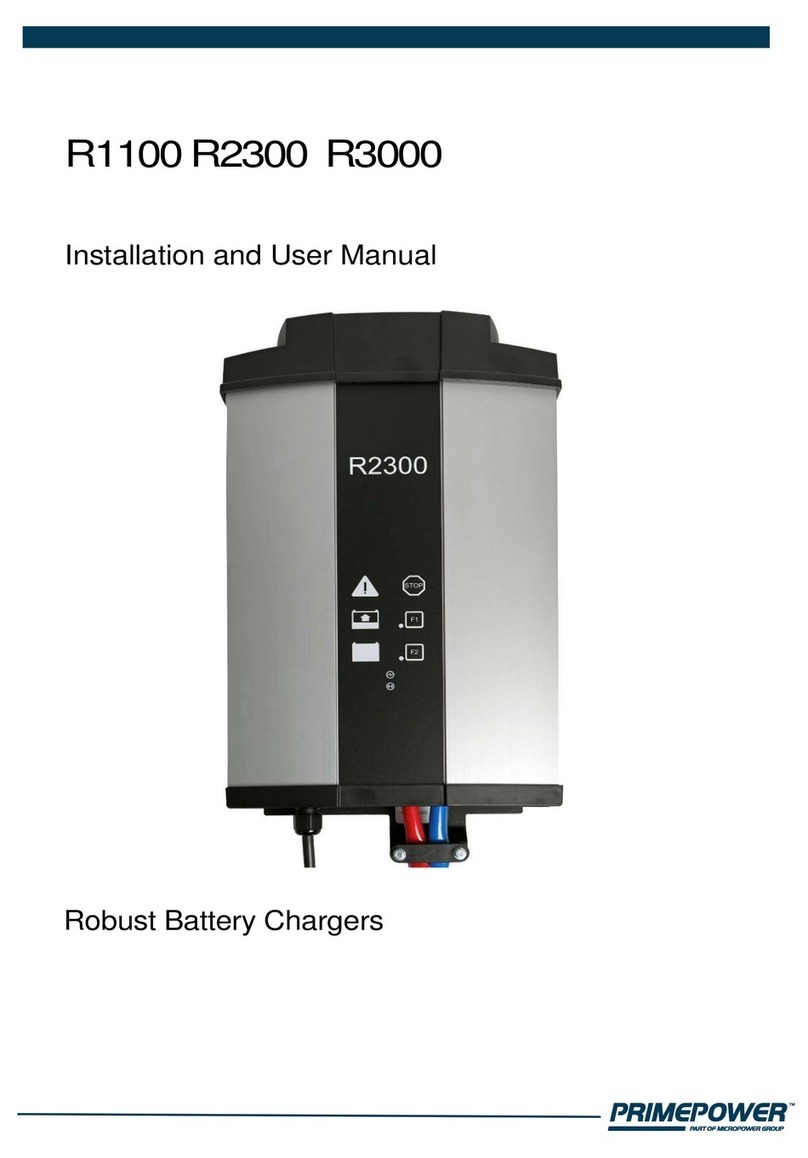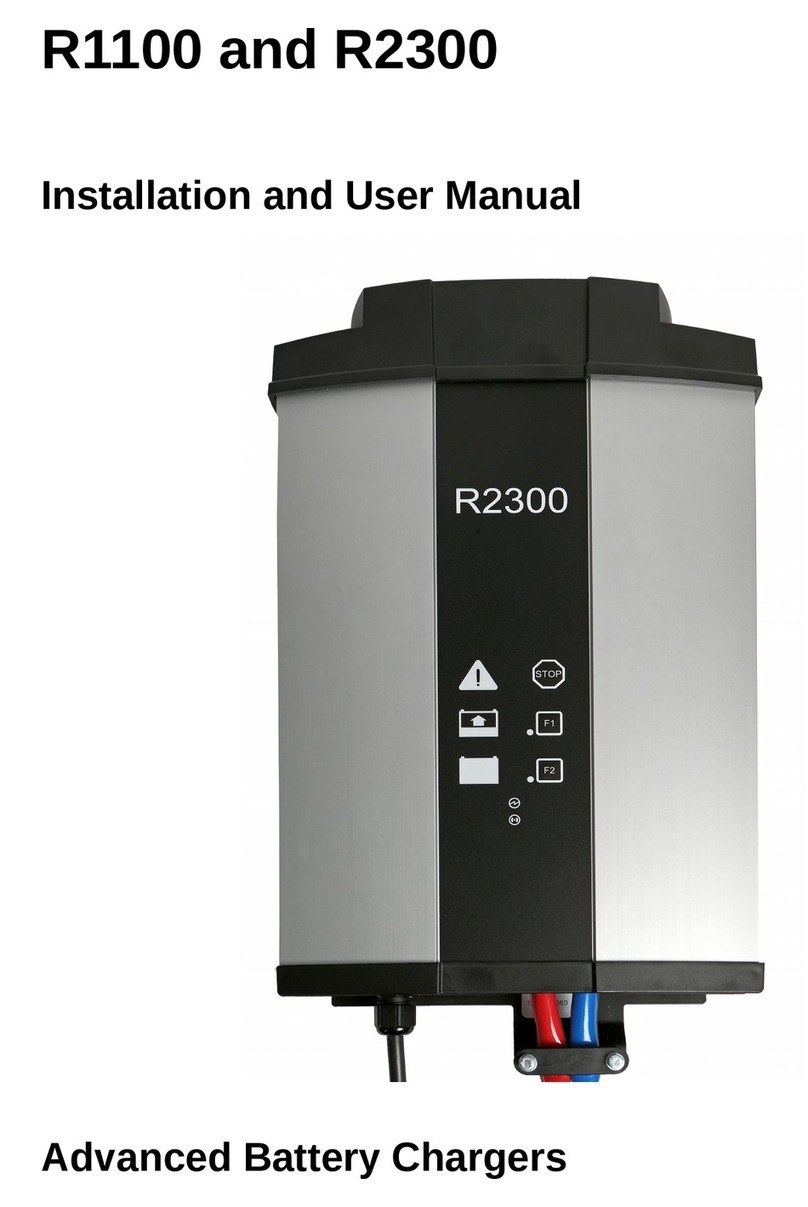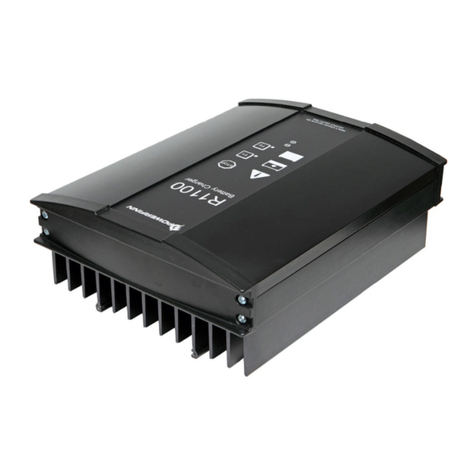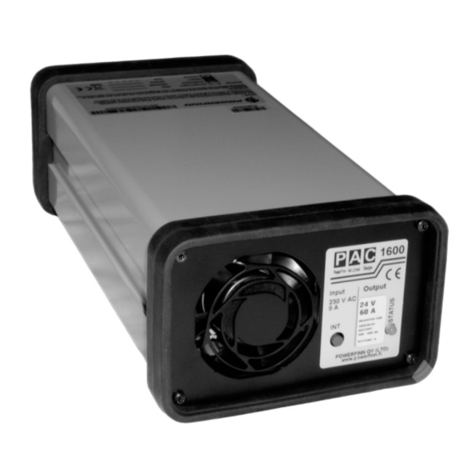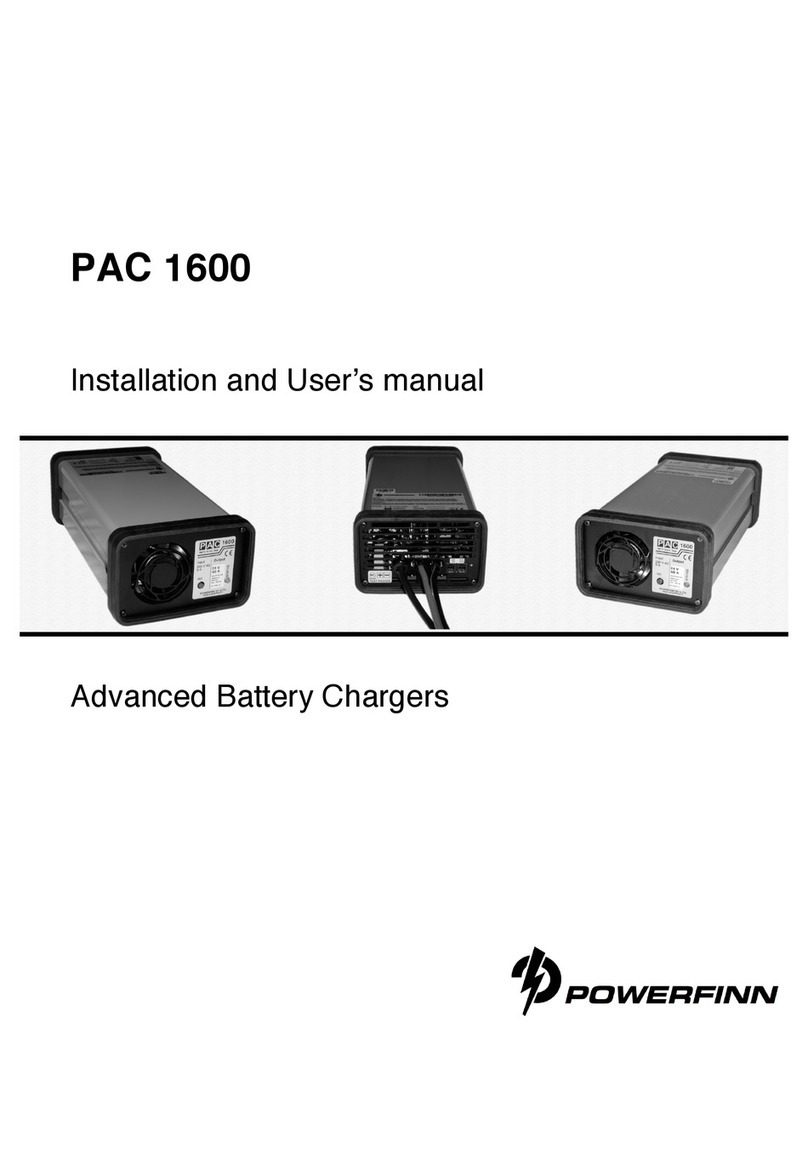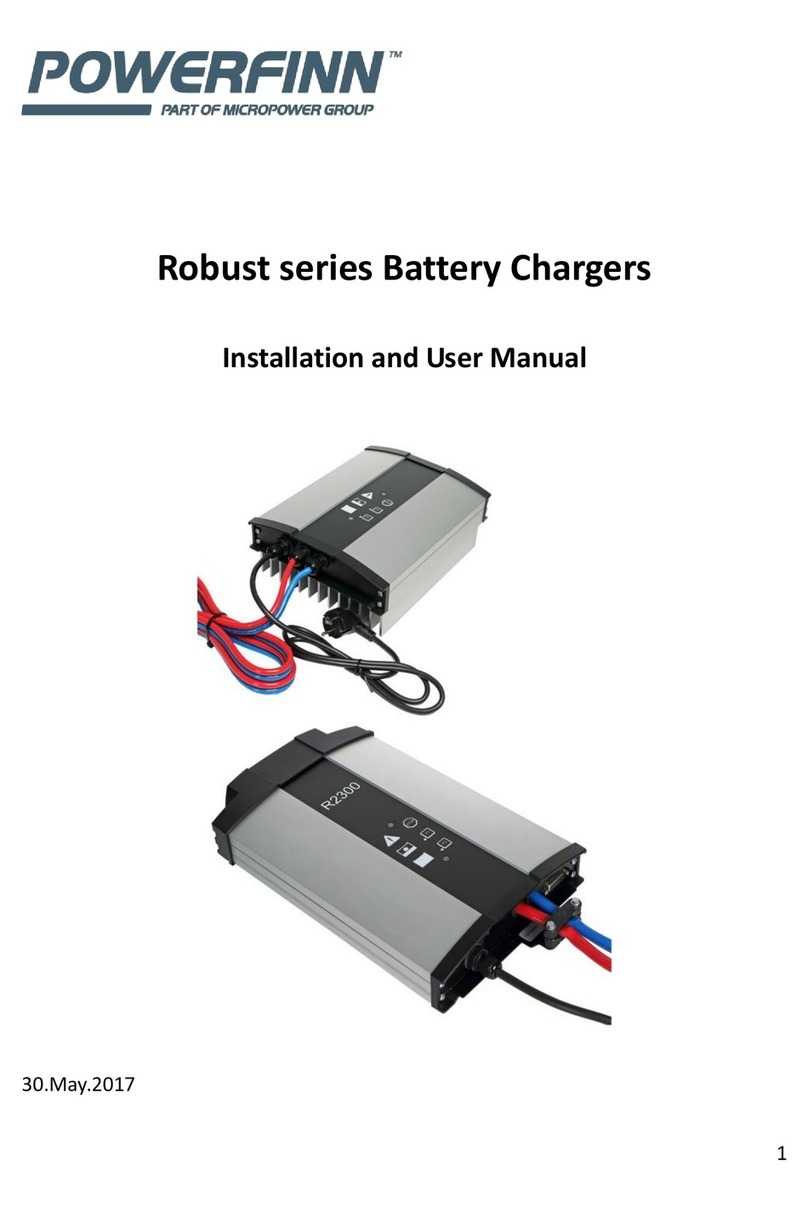8
Trouble–
shooting
and repair
If the cause of malfunction cannot be found, contact your retailer or the
manufacturer. Only authorized persons can repair the charger.
Guarantee The charger has a guarantee of two years from the date of purchase.
Guarantee covers manufacturing and component failures and is valid
only if the equipment is installed and used according to the instructions
in this manual.
Keep the receipt as evidence of the date of purchase.
Editing
charging
configuration
1. Disconnect battery.
2. Connect charger to mains supply.
3. As soon as blue LED is lit, press STOP for about 10 s. All LEDs
should flash shortly. Release STOP.
4. Special configuration mode has been entered. Various charging
algorithms and battery capacities can be selected. The list of
selections and their indications are according to the table below.
Charger displays table item 1.
5. Press STOP to scroll down the list. Small yellow LED “F1”
indicates if item is on or off. Press F1 to toggle item on/off. After
configuration is done, disconnect charger from mains.
red yellowgreen bluesmall green item
1 red yellow green blue s.green algorithm LK10-06 freely ventilated
2 red yellow green blue s.green algorithm LK10-04 wet puls
3 red yellow green blue s.green algorithm LK20-09 valve ventilated
Sonnenschein
4 red yellow green blue s.green algorithm LK10-05 wet with constant current
maintenance charging
5 red yellow green blue s.green algorithm PP100 unsealed
6 red yellow green blue s.green algorithm PP101 sealed
7 red yellow green blue s.green algorithm PP102 Sonnenschein
8 red yellow green blue s.green algorithm --
9 red yellow green blue s.green capacity 50 Ah
10 red yellow green blue s.green capacity 75 Ah
11 red yellow green blue s.green capacity 100 Ah
12 red yellow green blue s.green capacity 125 Ah
13 red yellow green blue s.green capacity 150 Ah
14 red yellow green blue s.green capacity 200 Ah
15 red yellow green blue s.green capacity 250 Ah
16 red yellow green blue s.green capacity 300 Ah
17 red yellow green blue s.green capacity 350 Ah
18 red yellow green blue s.green capacity 400 Ah
19 red yellow green blue s.green capacity 450 Ah
20 red yellow green blue s.green capacity 500 Ah
21 red yellow green blue s.green capacity 550 Ah
22 red yellow green blue s.green capacity 600 Ah
23 red yellow green blue s.green capacity 700 Ah
24 red yellow green blue s.green capacity 800 Ah
25 red yellow green blue s.green power supply mode
26 red yellow green blue s.green remote in start/stop
